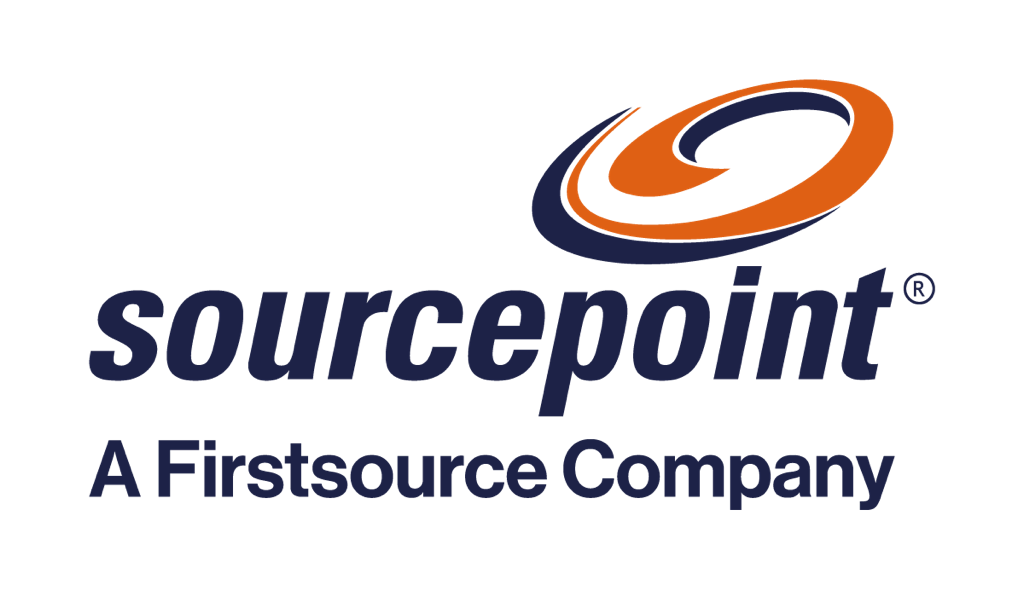An Interview With Cynthia Corsetti, originally published in Authority Magazine
Change management. Explain what benefits to expect and be very honest about the risks. Get participation from colleagues, team members, team leaders, supervisors. Allow for their feedback and really hear that feedback, engage in meaningful conversations. Celebrate the wins, whether for a team across key performance indicators or one person who worked through their claims status inventory in one day instead of one week. Get constant feedback and be open to hearing how the AI solution is working — or not working.
Artificial Intelligence is no longer the future; it is the present. It’s reshaping landscapes, altering industries, and transforming the way we live and work. With its rapid advancement, AI is causing disruption — for better or worse — in every field imaginable. While it promises efficiency and growth, it also brings challenges and uncertainties that professionals and businesses must navigate. What can one do to pivot if AI is disrupting their industry? As part of this series, we had the pleasure of interviewing Yvonne Perez.
Thank you so much for joining us in this interview series. Before we dive into our discussion our readers would love to “get to know you” a bit better. Can you share with us the backstory about what brought you to your specific career path?
I always wanted to be in global manufacturing, like my father. But back then he said, “Well, there aren’t a lot of women in manufacturing. I don’t think you should do it.” And I thought, I’ll show him! So, I joined a global manufacturing business, working in a maquiladora in Tijuana, responsible for Quality Assurance, Training, Accounting and Human Resources. I loved that job; I’d been there three years when I was recruited for a healthcare position in “eligibility.”
I’d never heard the term “eligibility.” After receiving six requests for an interview, I finally decided to give it a shot. As I toured hospitals as part of the interview process, I began to see the inefficiencies and waste contributing to financial losses. With my background in manufacturing, I was well-versed in ISO 9000 standards, other quality frameworks, and accounting, and I had a strong aversion to waste. I thought to myself, “This is where I belong. I’m passionate about this.” That’s how I found my way into healthcare.
What do you think makes your company stand out? Can you share a story?
Normally you don’t find a single organization serving healthcare providers and healthcare insurance companies under one roof. At Firstsource, we have a provider business, which I’m responsible for, and a payer business unit, led by a colleague, both of us under the same executive. We understand each other’s perspectives and client needs, and bounce ideas off each other. That’s very beneficial.
For example, a major health insurer engaged us to investigate the root causes of denied health insurance claims. We’re working to uncover what’s happening on the provider’s side and at the same time identify challenges within the health plan to determine where things are breaking down. Collaborations like this are becoming more common, and they benefit everyone — patients, healthcare providers, and health plans alike.
Another stand-out aspect of our work is how we manage our eligibility services. We assist hospitals in identifying the medical assistance programs and benefits patients may qualify for. Our team operates on-site in both inpatient and outpatient settings, screening patients directly. What sets us apart is our commitment to understanding the community. We analyze the area’s social demographics, engage with people in the streets, study the local major industries, and gain a comprehensive understanding of the community as a whole. All of this information helps us find pathways to medical assistance, like Medicaid or disability, or to help a patient clear a medical debt. When we understand the community, we can better serve patients on behalf of our clients.
You are a successful business leader. Which three character traits do you think were most instrumental to your success? Can you please share a story or example for each?
I’ve always been pretty agile, strategically, operationally and tactically. Today it’s important to adapt in all those areas. Sometimes it feels as though healthcare priorities change daily. That can be stressful. The trick is knowing that regardless of shifts in priority, the end goal is always the same: meeting the needs of our clients and the patients they serve. It is ultimately always about this. Being able to synchronize the strategic, the tactical and the operational changes is critical.
I am highly goal oriented, that’s what drives me. I break goals into three key components: the why, the how and the when. This helps me evaluate opportunities and map out a path to achieve the goal. I might not hit every goal, but I’m relentless in pursuit, I will give it everything I have to reach that goal.
A key to my business success has been my ability to understand what motivates others, which has helped me build strong, high-performing teams. Motivation is not always about money. It’s also important to know when to push versus pull. Sometimes you have to pull people along with you, guiding and supporting them. Other times you must push people into what they can do to help them realize their potential. For me, pulling often means knowing when to take a back seat, or when to follow and have others take the lead.
Let’s now move to the main point of our discussion about AI. Can you explain how AI is disrupting your industry? Is this disruption hurting or helping your bottom line?
My focus is on revenue cycle management. This includes everything from verifying a patient’s insurance coverage and obtaining prior authorization from health plans to approve medical procedures and prescriptions, to coding those procedures, creating and submitting claims to health insurers, billing patients for co-pays, determining out-of-pocket costs, and more. In revenue cycle management we’re on the verge of significant disruption over the next 5 years driven by AI and technology innovation. We are just at the tipping point for significant changes from AI.
The level of disruptive impact depends on how advanced a healthcare provider is in its adoption of AI and other technology. Healthcare must move beyond using AI for transactional, repetitive tasks and start leveraging AI for more strategic applications. Embracing AI and generative AI tools is critical. We need to overcome the fear of “what if it goes wrong?” While concerns exist, I believe the overall impact of AI on healthcare will be overwhelmingly positive.
As leaders, we must carefully balance the hard and soft benefits and set realistic expectations. Some organizations have overly ambitious goals, expecting 8–10x improvement. In reality, a 2X improvement that’s tangible and achievable should be considered a significant win. Managing these expectations is key to leveraging AI effectively.
There are positive disruptions that AI is driving that merit celebration such as improved productivity, enhanced analysis of data at our fingertips, and the ability to use AI to successfully create claims or appeal denied claims. All of this allows for greater satisfaction in a job well done on an individual basis and improved performance for the organization.
One possible negative effect from AI is a drain on resources. People often underestimate the time and effort required to develop and implement an AI solution and to phase it in. In healthcare, there are numerous compliance requirements to navigate, and restrictions may exist on how the AI solution can access an electronic health record system.
Overall, the intelligence derived from AI in optimizing work processes and workflows can significantly enhance overall efficiency, helping to streamline operations and ultimately maximize revenue for our clients.
Which specific AI technology has had the most significant impact on your industry?
In the revenue management cycle, machine learning is making a big impact. It’s being felt in prior authorizations, eligibility verification, insurance discovery and claims status checks. It is also supporting medical coding, and how procedures and diagnoses are coded for billing. It’s also helpful with managing denied claims, streamlining patient billing and improving customer service.
In the past I thought healthcare wasn’t rocket science, but I’ve changed my mind. It feels like we are getting really close rocket science levels of complexity. Between regulatory changes, differing policies between providers and payers, and patient expectations, the landscape has become incredibly complex. As regulations shift and the intricacies of claim adjudication grow, machine learning can be a powerful tool to help us better understand claims: to predict whether a claim will be paid, identify the root cause if it’s not, and to suggest actionable steps to resolve bottlenecks.
Can you share a pivotal moment when you recognized the profound impact AI would have on your sector?
That moment came when I understood simple coding could be performed faster at a high quality and accuracy rate standards without human intervention. That was an “ah-ha!” moment. Coding was something I’d always thought of as a manual process. After my first AI coding demo I remember my mind whirling and thinking, “We will reduce denials if we code this correctly up front. And claims will be billed faster.” That’s part of the equation; understanding all potential impacts across a revenue stream.
Now, we still need coders, right? For complex coding that’s not going away, at least not yet. But simple coding is all standardized. That’s really where we’ve leveraged AI the most in the revenue cycle.
How are you preparing your workforce for the integration of AI, and what skills do you believe will be most valuable in an AI-enhanced future?
At Firstsource, we recognize the importance of ensuring that all colleagues, regardless of their business unit, understand the impact of AI. To achieve this, we’ve integrated AI case studies and applications into our general learning module, available to employees at all levels. We require all team members to complete some form of training on AI, which includes topics like generative AI and machine learning, through our learning management system.
The specific skills required depend on the aspect of AI we’re applying. There’s a course Firstsource offers on a data mining tool that helps identify opportunities and offers practice working with analytics and results. When AI is used for analytics, it’s crucial that employees understand the underlying data so they can translate insights into actionable steps, not just report interesting findings. Similarly, while machine learning algorithms and generative AI can summarize an account’s history, it’s up to the human to decide on the next course of action.
What are the biggest challenges in upskilling your workforce for an AI-centric future?
First, it is essential to give people both the time and motivation to learn about AI and generative AI. We need to create space in their schedules and offer a variety of training options. Some people prefer learning by watching videos or lectures, others through reading, and some by experiential learning, such as coding exercises or working with AI tools directly. By offering diverse learning methods, we can ensure everyone has the opportunity to engage with AI in a way that suits their learning style.
Second, it is crucial to foster an open mindset about how AI can enhance our daily work functions. A common fear is that AI will replace jobs, leaving people unemployed. The reality is that AI will complement our performance, not replace it. It’s likely to take over more tactical, repetitive tasks — tasks that many people find monotonous or tedious anyway. We need to help people see that AI is an enhancement to their work. Think of it like your cell phone: the iPhone 6 was groundbreaking when it was released, but now we have the iPhone 16, and it’s constantly improving, enriching our lives in new ways — and making them more enjoyable, too. AI can do the same for us in the workplace, making our tasks more efficient and ultimately more rewarding.
What ethical considerations does AI introduce into your industry, and how are you tackling these concerns?
We must make sure our AI solutions operate within all the constraints the healthcare industry has. We monitor security and privacy, making sure we’re limiting access and usage and keeping the data safe. Our work must comply with the HIPPA privacy regulation and protect personal health information. We follow all regulations and guidelines for the federal healthcare programs, including Medicare and Medicaid. And our client contracts have detailed performance and security guidelines we must follow.
Ok super. Here is the main question of our interview. What are your “Five Things You Need To Do, If AI Is Disrupting Your Industry”? If you can, please share a story or an example for each.
1 . Accountability. One of the risks with AI is that it can break. There must be a formal quality assurance (QA) process around every AI component to ensure accuracy. At first those checks may be daily. Then the checks can be weekly, then bi-weekly and eventually monthly or quarterly. Those checks should be part of a reconciliation plan. You need a sense of security about the accuracy and the variance rate in potential errors.
Then there must be clear lines of responsibility for the AI tool. Those may run among the operations, technology, analytics, electronic data interchange and data teams — whatever functions the AI solution uses. That clear delineation of responsibilities to avoid future errors is critical. And you need a backup plan for the AI if it breaks.
2 . Engage. AI really is a team investment, so you need engagement across the aisle and up and down an organization’s hierarchy. One silo cannot deliver an AI proof of concept on its own. Engagement and participation from all parties is critical.
3 . Know where and when AI fits into your business roadmap. You need to know your business objectives and understand what impact the AI tools and solutions you’re considering will have on your goals. For example, I saw a great solution recently with embedded AI and it really was solid. But it doesn’t fit into my fiscal year priorities. In the future, the tool will be very beneficial. But today my focus is on something else.
4 . Standardize the cost-benefit calculations. It’s crucial to standardize how you measure outcomes and clearly define what goes into your cost calculations. This includes both hard and soft benefits and the personnel investment, which is often overlooked. Personally, I count everything in hours because I need to know if members of my operations team are spending their time on operational functions or AI development, which has inherent costs.
Define whether that cost-benefit model can be replicated easily and if that replication is going to have the same cost structure. Or is it going to be different because you’ve already built some components?
Constantly measuring impact is key. When we’re evaluating human capital, we don’t measure productivity and quality just once, we measure it consistently and continuously. That same principle applies to AI/generative AI. You need to constantly measure its impact to truly understand its effectiveness.
Standardizing how you measure benefits is essential. How are you calculating revenue gained or expenses saved and/or time saved?
5 . Change management. Explain what benefits to expect and be very honest about the risks. Get participation from colleagues, team members, team leaders, supervisors. Allow for their feedback and really hear that feedback, engage in meaningful conversations. Celebrate the wins, whether for a team across key performance indicators or one person who worked through their claims status inventory in one day instead of one week. Get constant feedback and be open to hearing how the AI solution is working — or not working.
What are the most common misconceptions about AI within your industry, and how do you address them?
One misconception is that AI is going to replace humans. Maybe someday, as machines get smarter, but not today. Today, people are teaching the machines. We’re not losing that knowledge base. Going forward, upskilling employees, giving them opportunities to learn so they are still employable, is important.
There’s also the misconception that building AI is easy — that it just takes a flip of a switch, is done inside of 30 days or 45 days. That’s not the reality. The timing depends on what you’re building, where the data is coming from, the checks and balances on the accuracy. Sometimes building AI can take a lot longer than expected.
Can you please give us your favorite “Life Lesson Quote”? Do you have a story about how that was relevant in your life?
I don’t have a favorite quote per se, but here’s what comes to mind: “Don’t quit when things are hard. That’s giving up. Push yourself to the goal line and quit when it’s easy. Your heart and soul will know it’s time to move in another direction.”
People have said to me “I don’t like (whatever they have an issue with), I’m working so many hours, this is so challenging, I just want to quit.” They’re challenged because they’re learning something new, and it is harder. But is it going to be harder forever? Are they just giving up on themselves?
If you quit when things are hard, you’ll never know whether you could have done it. When the task becomes easy, when you know you can do it, and you still want to quit because you’re not motivated at work anymore, then it’s time to evaluate where you are.
I once was in love with a job, the people, the location, the processes, basically everything. Then a very challenging boss came in who was, frankly, racist and sexist. It was hard to hear the comments he was making about certain ethnic groups. I had to decide: Do I want to stay and deal with it through the appropriate channels, or do I just want to quit? It would have been so easy to just quit. But I thought, no, I have a responsibility. I worked through the process, and I was successful at that job. Then later, when I was no longer happy there, I knew it was time to move on.
Off-topic, but I’m curious. As someone steering the ship, what thoughts or concerns often keep you awake at night? How do those thoughts influence your daily decision-making process?
The thing that bothers me most is if I’m not meeting goals. I’m always thinking about the goals in front of me and how to achieve them. Aside from that, if the people who report to me are unhappy, or feel particularly stressed for too long, that will keep me up at night because I have a responsibility to them. As leaders, we also work for those that report to us, it is a two-way street. While I can’t make everyone’s job ‘easy’ — that’s just not the reality — I focus on finding ways to help them be more successful in their current roles. My goal is to support my team to perform at their best, both individually and as part of the team. It’s about providing tools, guidance and opportunities that enable each individual to excel and grow.
I help prioritize tasks, functions, and projects. I push back on projects by assessing what is truly critical and what can wait. I push back on initiatives that, while valuable, aren’t urgent, evaluating what can be done today vs. those that can be deferred until a more appropriate time. I also identify where cross-functional teams can provide support to operations. These are the things I focus on every day to keep everything running smoothly and efficiently.
You are a person of great influence. If you could start a movement that would bring the most amount of good to the most amount of people, what would that be? You never know what your idea can trigger. :-)
I’d start a movement about listening, really listening to others. People don’t really listen to each other anymore. We’re too worried about our own opinions, our objectives, our goals, our position in the hierarchy. If we really listen, I believe we’ll hear it’s all about emotions.
I was taught not to show emotion in business. But everything’s emotion based. A good salesperson sells on emotion. That emotion may be tied to the customers’ goals, tied to margin goals, or working towards the next step on the promotional ladder. It’s all emotion driven. A good motivator will work to understand the emotions driving the team.
I’d encourage listening to your people so you can get a bead on what they’re thinking. Sometimes I’ll just randomly say, “Let’s take a temp check. How are you feeling today? How do you feel about this?” Sometimes the response is positive, negative, disappointment or excitement, it can even be anger, it is whatever it is. I’m not there to solve those emotions, so we won’t sit there and dig into it. But understanding where somebody is emotionally makes for an easier workplace.
How can our readers further follow you online?
https://www.linkedin.com/in/yvonneperez2013/
Thank you for the time you spent sharing these fantastic insights. We wish you only continued success in your great work!
About Yvonne B. Perez: Yvonne is Global Head of Provider Operations and Senior Vice President Operations for Firstsource. In her position, she is responsible for working with healthcare providers and other healthcare organizations to use the power of robotic process automation, AI, including generative AI, and machine learning to achieve new standards of efficiency and quality, especially in the healthcare provider revenue cycle. Yvonne brings more than 27 years of experience in healthcare to her role.
About the Interviewer: Cynthia Corsetti is an esteemed executive coach with over two decades in corporate leadership and 11 years in executive coaching. Author of the upcoming book, “Dark Drivers,” she guides high-performing professionals and Fortune 500 firms to recognize and manage underlying influences affecting their leadership. Beyond individual coaching, Cynthia offers a 6-month executive transition program and partners with organizations to nurture the next wave of leadership excellence.










